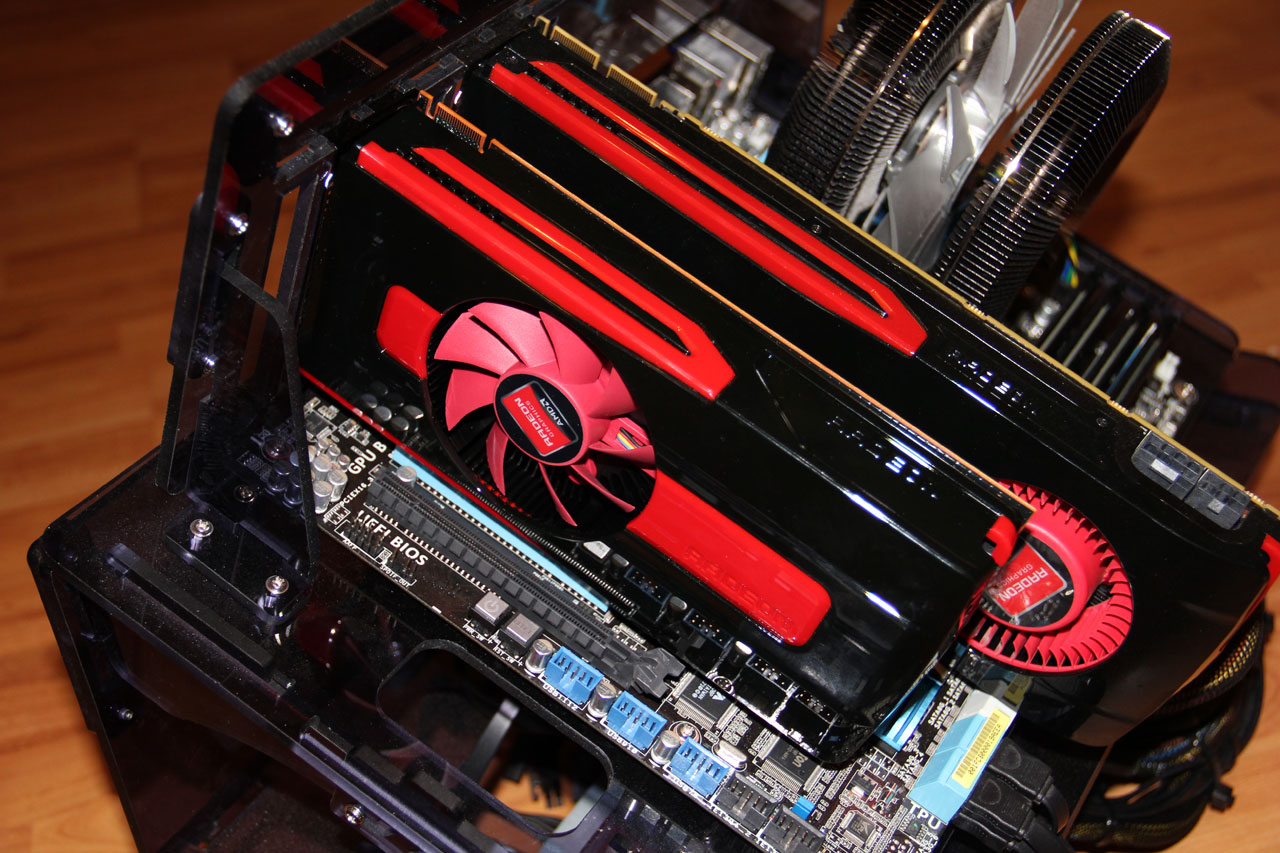AMD Radeon HD 7770 GHz Edition & HD 7750 Review
The Radeon HD 5770 was a runaway success for AMD. It garnered huge market share with it's solid performance, mainstream-target price, and introduction of the Eyefinity ecosystem at an attainable price point. Within the generation, it ended up being one of the most popular video cards on the market.
Back in the summer of 2010, I reviewed the Radeon HD 5770 and 5750. In my conclusion I wrote, "The 5770 is really the tipping point in the ATI Radeon HD 5000-series. It performs quite well in a single widescreen environment, and there are instances where it performs admirably in Eyefinity. If you frequently play older titles that aren't shader intensive, such as anything based on the Source engine (Half-Life 2, Team Fortress 2, Left4Dead), then the 5770 could well serve you in an Eyefinity environment. Even newer titles such as Batman and Dirt 2 can easily hit 30fps in Eyefinity."
Fast forward two generations, and we're now at the Radeon HD 7770. There really wasn't a Radeon HD 6770 - it was just a rebadged 5770 originally intended for OEMs. Games have come a long way in the last two years, with greater adoption of DX11 and advanced features such as tessellation. Has the "mainstream" offering from AMD kept pace with the times?

Physical Aspects
Dealing with high-end cards all the time has made me forget exactly how space video cards can really be. Both the Radeon HD 7770 GHz Edition, and especially the Radeon HD 7750 are small and light. The HD 7770 is smaller than the reference Radeon HD 6790, and much lighter - deceptively light. The Radeon HD 7750 is a single slot card, and the reference model doesn't even posses any sort of cooling shroud. Due to it's small footprint and lower power/thermal profile, several AIBs are offering fanless options that should appeal to SFF and HTPC enthusiasts.
Comparison of the Radeon HD 7770 GHz Edition and a Radeon HD 7970

Architecture & Specs
The Radeon HD 7770 GHz Ed and the HD 7750 round out the bottom end of the "gaming" cards in the 7000-series. The HD 7750 hits a very low power profile, and doesn't need any external power to supplement the 75W from the PCI-e bus.
| Card | GPUs | Transistors | Max Memory | Shaders | Clock (MHz) | TDP (Watts) | Power | MSRP* | ||
| Core | Mem | Idle | Max | |||||||
| AMD Radeon HD 7770 GHz Ed | 1 | 1.5B | 1GB | 640 | 1000 | 1125 | <3 | 80 | 6-pin | $159 |
| AMD Radeon HD 7750 | 1 | 1.5B | 1GB | 512 | 800 | 1125 | <3 | 55 | None | $109 |
| AMD Radeon HD 6850 | 1 | 1.8B | 1GB | 960 | 775 | 1000 | 19 | 127 | 6-pin | $159 |
| AMD Radeon HD 6790 | 1 | 1.7B | 1GB | 800 | 840 | 1050 | 19 | 150 | 6-pin | $139 |
| AMD Radeon HD 6770 | 1 | 1.04B | 1GB | 800 | 850 | 1200 | 18 | 108 | 6-pin | $119 |
| *These values represent the maximum wattage allowed through the AMD PowerTune. The idle power usage is for the "long idle" power state. | ||||||||||
